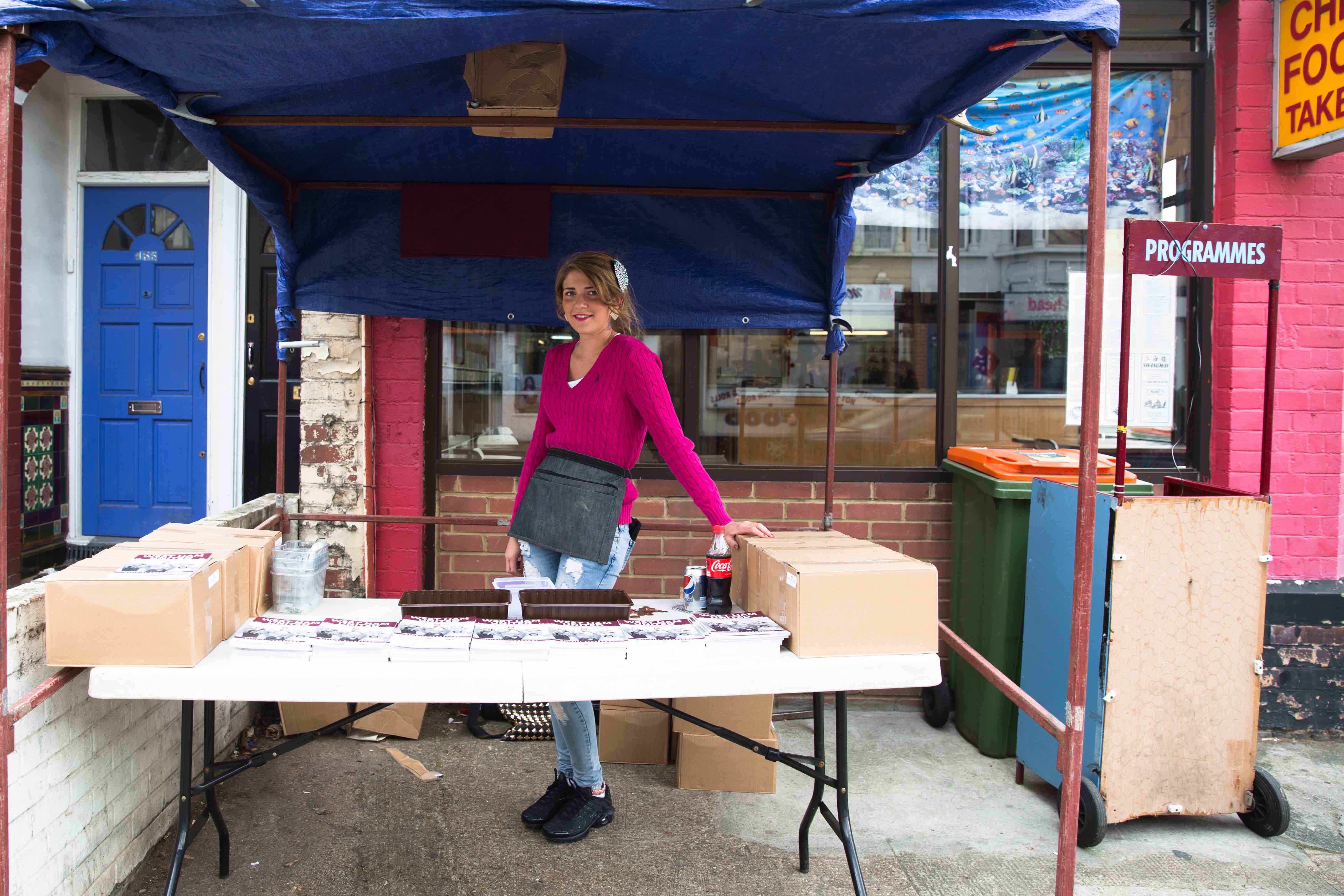Ghosts of a lost East London: The last match day at West Ham’s Boleyn Ground
- Text by Michael Fordham
- Photography by Michael Fordham

For better or worse we spent so much of our youth over there.
We watched it become something it never was. And without noticing it we became part of that change ourselves. It was about football. And it was much more than that. You found out about who you were over there. It was as much about identity and dressing devilishly than about what happened on the pitch. It was who you were. And if you weren’t that you were something else. That was important. Especially when you were sixteen years old and it was 1984.


There was something about Upton Park – something about the angles of the paving stones; something about the cut of the pointing; something ramshackle, improvised, unruly. The manor reflected perfectly the character of West Ham United Football Club. It was tinged with same sense of ragged swagger. That’s what we identified with. It wasn’t all about the legends of Moore, Hurst, Bonds, Brooking and McAvennie (peace be upon them). It was more about the light and shade of an East End Saturday – the way that at sunset the terraces off Green Street and the Barking Road looked beautiful and melancholy. Especially if we’d lost. And we often had.


It was all about the smells too. The tangy saltiness of the onions and the burgers and the horse shit and the sticky lager on the carpets of the boozers. It was about the laughter and bowl and the buzz of an away day. It was about taking the piss out of the coppers and slagging off the opposition. It was all about the milling about and the running and the coming and going and how your weekend could be defined by what happened on those terraces, which train you ended up on, and whether or not the northern coppers really hated you.

How many times did you slog home, changing trains at Mile End listening to the scores on someone else’s radio? How many times were you treated like shit by some constabulary or other, herded on to some unheated milk train or other, some eighteen stone scaffolder from Basildon passed out pissed on you, reeking of Embassy No 9 and Hofmeister? How many times did you remember that you must remember to do something else with your Saturdays? But then you forgot. You always did.


Over There: The Last Day at the Boleyn is the first in a series of hand made little books about football from the perspective of East London. The first edition documents the last day at the ancestral home of West Ham United: Upton Park and the Boleyn Ground.
Enjoyed this article? Like Huck on Facebook or follow us on Twitter.
Latest on Huck

Clubbing is good for your health, according to neuroscientists
We Become One — A new documentary explores the positive effects that dance music and shared musical experiences can have on the human brain.
Written by: Zahra Onsori

In England’s rural north, skateboarding is femme
Zine scene — A new project from visual artist Juliet Klottrup, ‘Skate Like a Lass’, spotlights the FLINTA+ collectives who are redefining what it means to be a skater.
Written by: Zahra Onsori

Donald Trump says that “everything is computer” – does he have a point?
Huck’s March dispatch — As AI creeps increasingly into our daily lives and our attention spans are lost to social media content, newsletter columnist Emma Garland unpicks the US President’s eyebrow-raising turn of phrase at a White House car show.
Written by: Emma Garland

How the ’70s radicalised the landscape of photography
The ’70s Lens — Half a century ago, visionary photographers including Nan Goldin, Joel Meyerowitz and Larry Sultan pushed the envelope of what was possible in image-making, blurring the boundaries between high and low art. A new exhibition revisits the era.
Written by: Miss Rosen

The inner-city riding club serving Newcastle’s youth
Stepney Western — Harry Lawson’s new experimental documentary sets up a Western film in the English North East, by focusing on a stables that also functions as a charity for disadvantaged young people.
Written by: Isaac Muk

The British intimacy of ‘the afters’
Not Going Home — In 1998, photographer Mischa Haller travelled to nightclubs just as their doors were shutting and dancers streamed out onto the streets, capturing the country’s partying youth in the early morning haze.
Written by: Ella Glossop